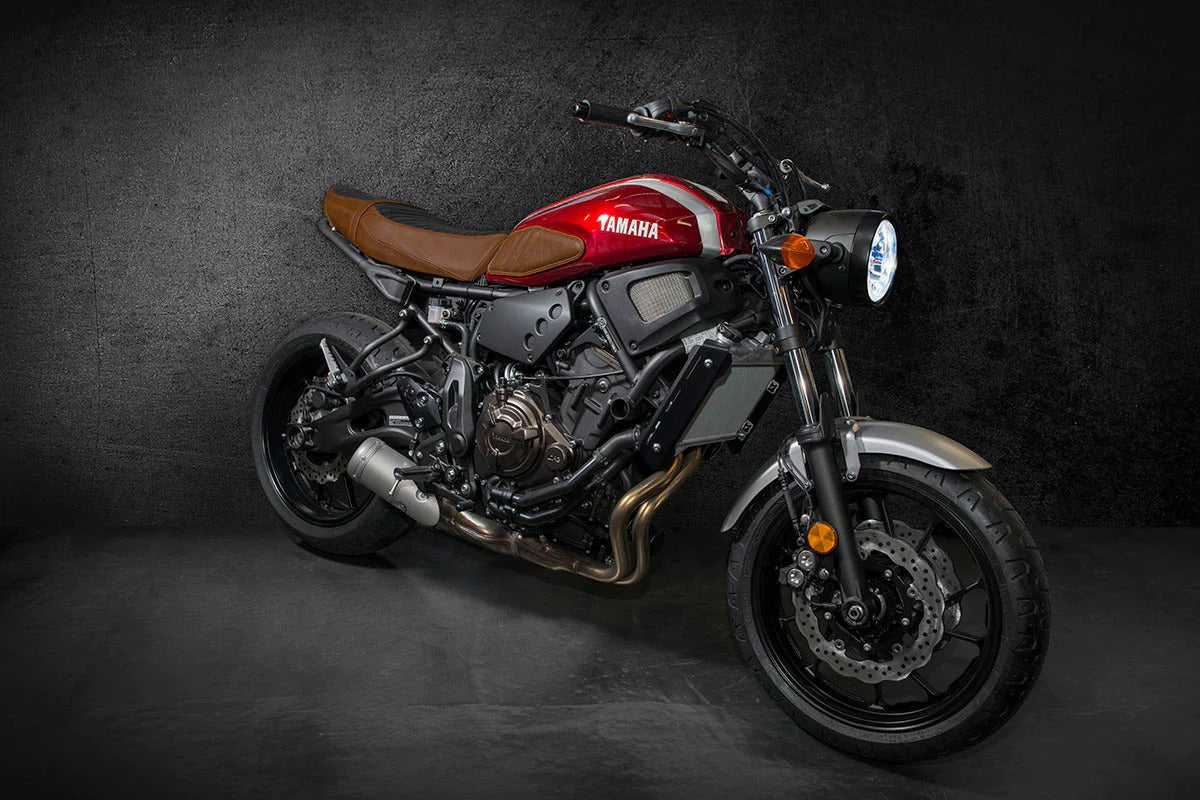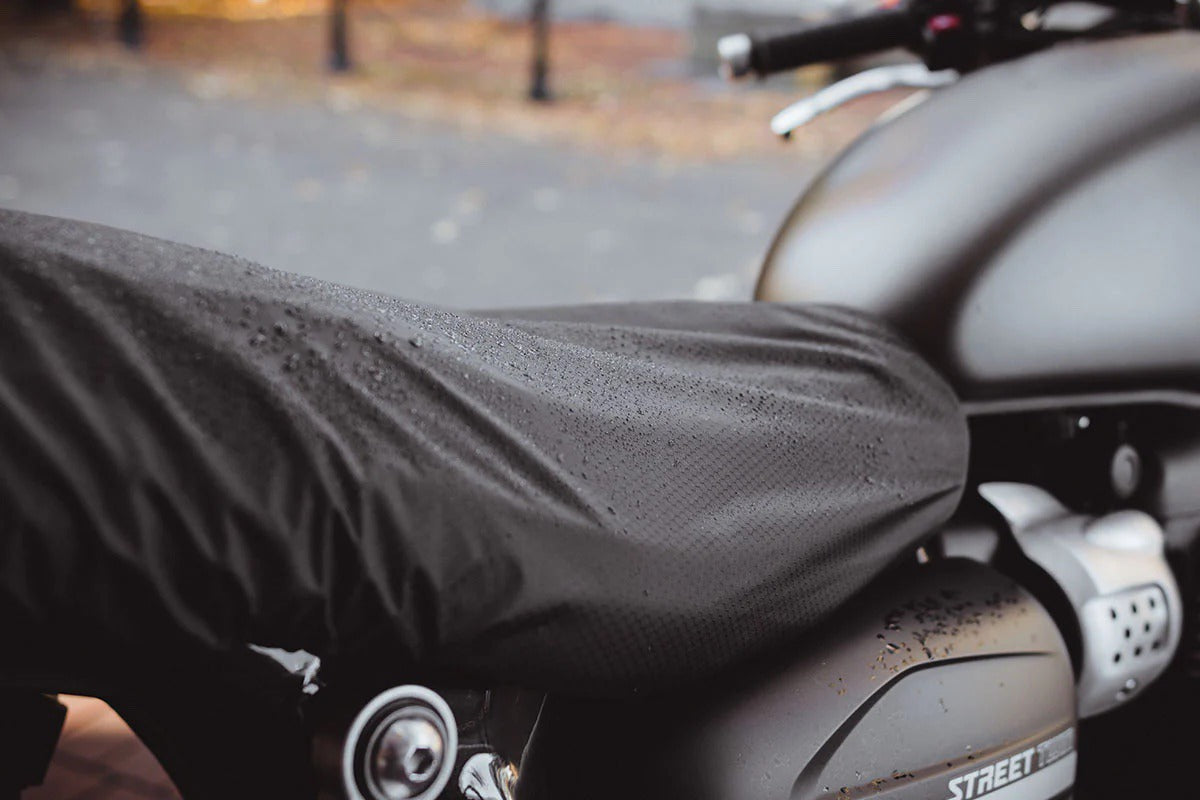Summary:
- While motorcycles are built tough, prolonged exposure to rain can cause damage—especially to the saddle.
- Continuous rain exposure can cause saddle foam to deteriorate. You might experience soggy and deformed foam, mold, and mildew growth, and corrosion of internal components underneath the seat.
- Luimoto's marine-grade vinyl gives our seat covers superior protection against water, outperforming most OEM materials.
- Keep your saddle safe from water by investing in a quality seat cover and waterproof motorcycle covers, ensuring proper drainage, using water-repellent sprays, and storing the bike indoors when possible.
- In case your saddle gets soaked, quick actions like drying it off, airing it out, and applying protectants can minimize damage.
A lot of folks baby their bikes, but motorcycles are pretty tough. They’re meant to be ridden hard, and that means they’ve got to function in a variety of different environments and conditions—including dirt, wind, and (of course) rain.



